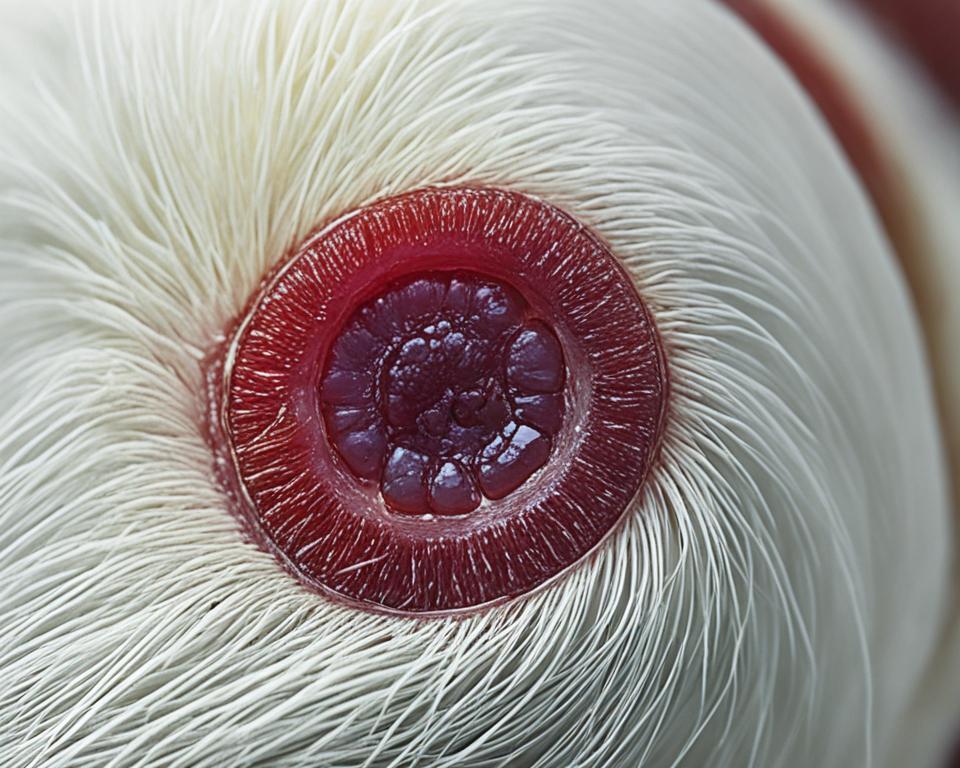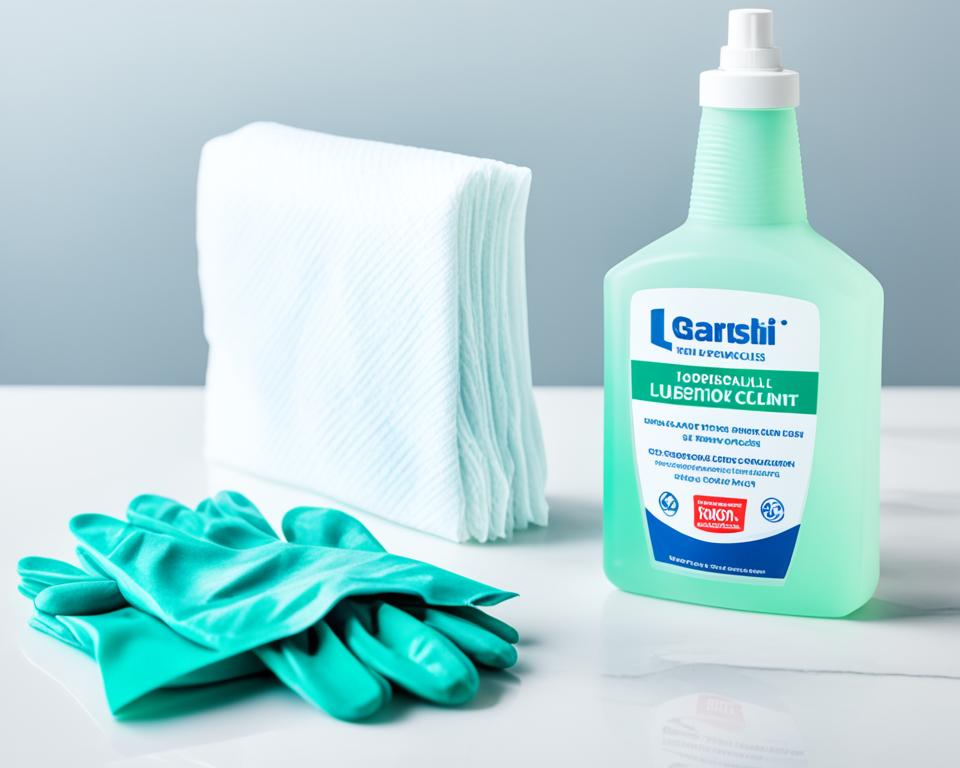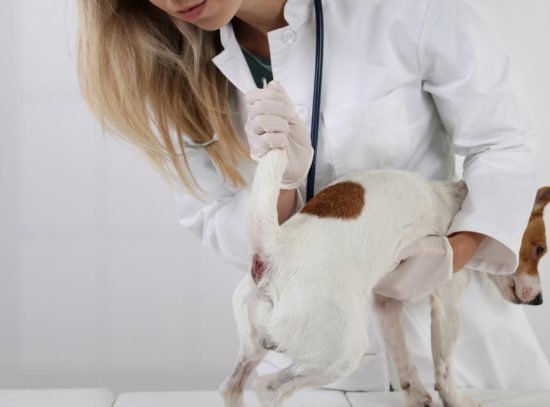How to Express Dog Anal Glands: A Gentle Guide
Learn the safe and gentle method on how to express dog anal glands to ensure your pet’s comfort and health with our expert step-by-step guide.

Have you ever noticed your dog exhibiting strange behaviors like scooting, excessive licking, or a foul odor? These could be signs of full anal glands. But what exactly are anal glands, and why is it important to express them? In this comprehensive guide, we will walk you through the process of expressing dog anal glands in a gentle and effective way.
Expressing dog anal glands is not only essential for your dog’s comfort but also for their overall health. By properly expressing the anal glands, you can prevent potential complications such as infection and impaction, which can cause significant discomfort and pain.
But how to express dog anal glands safely and effectively? From understanding the need for anal gland expression to step-by-step techniques, we will cover everything you need to know. Whether you are a beginner or have previous experience, this guide will provide you with expert tips and insights on expressing dog anal glands without causing any harm.
So, are you ready to become a pro at expressing dog anal glands? Let’s dive in and discover the gentle way to ensure the well-being of your furry friend.
Understanding the Need for Anal Gland Expression
Proper anal gland expression is essential for maintaining the health and well-being of your dog. Anal glands, also known as anal sacs, are small glands located on either side of your dog’s anus. These glands produce a strong-smelling fluid that is normally released during bowel movements. However, sometimes these glands can become full and require manual expression.
Symptoms of Full Anal Glands
When your dog’s anal glands are full, they may exhibit several symptoms indicating the need for expression. The most common signs include:
- Scooting: Your dog may drag its bottom across the floor or ground in an attempt to relieve discomfort.
- Excessive licking: Your dog may continually lick its anal area in an effort to alleviate irritation.
- Foul odor: A strong, unpleasant smell may be present around your dog’s rear end.
These symptoms can cause significant discomfort for your dog and should not be ignored. It is important to recognize these signs and take appropriate action.
Health Implications of Not Expressing Anal Glands
Failure to express your dog’s anal glands can lead to serious health implications. When the glands become full and are not expressed, they can become impacted or infected. Impacted anal glands occur when the fluid thickens and cannot be properly released. This can cause pain, swelling, and even rupture of the anal gland. Infection can occur when bacteria enter the impacted glands, leading to abscesses or other complications.
Regular anal gland expression helps prevent these health issues and promotes your dog’s overall comfort and well-being. By addressing full anal glands promptly, you can avoid potential complications and ensure your dog’s optimal health.
When Should Dogs Have Their Anal Glands Expressed?
Knowing when to express your dog’s anal glands is crucial for their overall health and comfort. The frequency of anal gland expression can vary depending on factors such as age, breed, and individual needs. Regular monitoring and observation are key in determining when your dog needs their anal glands expressed.
For some dogs, anal gland expression may be necessary every 1-2 months, while for others, it may be needed less frequently or even more often. It is essential to pay attention to any signs of discomfort or irritation that your dog may exhibit, as this could indicate the need for gland expression.
Younger dogs or dogs with certain breeds, such as Bulldogs or Cocker Spaniels, may require more frequent anal gland expression due to genetic factors or gland size. However, it is essential to consult with your veterinarian to determine an appropriate schedule based on your dog’s specific needs.
Preparing to Express Your Dog’s Anal Glands At Home
Before you begin expressing your dog’s anal glands, it is important to prepare both yourself and your workspace. By gathering the necessary supplies and creating a safe and clean environment, you can ensure a smooth and hygienic experience. Let’s take a closer look at what you need and how to set up your workspace.
Gathering Necessary Supplies
Having the right tools and supplies is essential for expressing your dog’s anal glands effectively. Here’s a checklist of items to gather before you start:
- Disposable gloves to protect your hands and maintain hygiene
- Paper towels for cleaning up any mess
- Petroleum jelly or a water-based lubricant to help facilitate the expression process
- Cleaning materials, such as mild soap and warm water, for sanitizing the area afterward
Creating a Safe and Clean Workspace
Establishing a safe and clean workspace is crucial to promote a comfortable experience for both you and your dog. Follow these tips to create an ideal environment:
- Choose a well-lit area: Find a space with good lighting to ensure you can see what you’re doing clearly. Natural light or bright lamps can be helpful.
- Use a non-slip surface: To prevent your dog from sliding or moving during the process, place it on a stable and non-slip surface, such as a rubber mat.
- Keep your dog calm and secure: Find a quiet area where your dog feels comfortable and secure. This can help reduce anxiety and make the experience more pleasant for them.
- Protect surrounding surfaces: Lay down a protective layer, such as a towel or disposable puppy pad, to catch any fluid or debris that may be expelled during the gland expression.

| Supplies | Benefits |
|---|---|
| Disposable gloves | Protect your hands and maintain hygiene during the process. |
| Paper towels | Use for easy clean-up of any mess. |
| Petroleum jelly or water-based lubricant | Facilitate the expression process by providing lubrication. |
| Cleaning materials (mild soap and warm water) | Sanitize the area afterward to prevent the spread of bacteria. |
Having the right supplies and setting up a safe and clean workspace are essential steps in preparing to express your dog’s anal glands. By creating an optimal environment, you can ensure a more comfortable and successful experience for both you and your furry friend.
How to Express Dog Anal Glands?

Here is a step-by-step guide on how to express your dog’s anal glands. It is essential to follow these instructions carefully to ensure a safe and effective process. Remember, if you feel uncomfortable or unsure about expressing your dog’s anal glands, it is always best to seek assistance from a professional veterinarian or groomer.
External Expression Method
The external expression method is a commonly used technique for expressing a dog’s anal glands. Follow these steps:
- Begin by washing your hands thoroughly and putting on disposable gloves.
- Gently lift your dog’s tail to expose the anal area. Be cautious and ensure your dog feels comfortable.
- Apply gentle pressure on both sides of the anal opening using your thumb and index finger. Squeeze the glands gently to express the fluid. Be careful not to apply excessive force.
- Use paper towels to catch and dispose of the expressed fluid. Keep the area clean to prevent any infections.
- Once you have successfully expressed the anal glands, reward your dog with praise or treats for their cooperation.
Internal Expression Method
The internal expression method is a more delicate procedure and should be done by a professional if you are unsure. Here are the basic steps involved:
- Consult with a veterinarian or groomer who is experienced in the internal expression method.
- Using lubrication, gently insert a gloved finger into your dog’s anus. Be very gentle and proceed with caution.
- Feel for the anal glands, located at the 4 and 8 o’clock positions around the anus.
- Apply gentle pressure towards the center of the anus to express the fluid. Be careful not to apply too much pressure.
- Wipe away the expressed fluid using paper towels and dispose of them properly.
- Ensure your dog is comfortable and relaxed throughout the process. Reward them with treats or praise for their cooperation.
What Normal Anal Gland Fluid Should Look Like
It is important to understand what normal anal gland fluid should look like in order to monitor your dog’s anal gland health. Normal anal gland fluid is typically:
- Color: Pale yellow or amber
- Consistency: Thick and slightly oily
- Odor: Mild and musky
When your dog’s anal glands are functioning properly, the fluid should be expressed during bowel movements, leaving minimal residue behind. However, if the fluid becomes abnormal in color, consistency, or odor, it may indicate an underlying issue that requires attention.
If you notice any of the following concerning changes in your dog’s anal gland fluid, it is recommended to seek veterinary assistance:
- Dark or bloody anal gland fluid
- Thinning or watery consistency
- Foul or strong odor
- Excessive or persistent secretion between bowel movements
Changes in anal gland fluid can be a sign of infection, inflammation, impaction, or other underlying health concerns. By recognizing these abnormalities, you can act promptly and ensure your dog receives the necessary veterinary care.
Complications to Look Out For
While expressing your dog’s anal glands is generally a straightforward process, it is important to be aware of potential complications that can arise. By understanding these complications, you can better ensure the health and well-being of your furry friend.
Identifying Signs of Infection or Impaction
One of the complications that can occur during anal gland expression is infection. Signs of infection may include swelling, redness, pain, or an abnormal discharge. If you notice any of these symptoms, it is essential to seek veterinary assistance promptly. Infections can be caused by bacteria entering the anal glands during expression or from pre-existing conditions.
Another complication to be aware of is impaction. Signs of impaction may include difficulty or inability to express the glands, a hardened mass, or a foul odor. Impaction can occur when the anal gland contents become thickened or hardened, making them difficult to express. If you suspect impaction, it is recommended to seek veterinary assistance for proper evaluation and treatment.
When to Seek Veterinary Assistance
While expressing your dog’s anal glands at home can be a cost-effective and convenient option, there are instances where veterinary assistance is necessary. It is important to seek veterinary assistance if:
- Your dog’s anal glands are repeatedly infected or impacted.
- The symptoms of infection or impaction persist or worsen despite home remedies.
- Your dog exhibits signs of pain or discomfort during anal gland expression.
- You are unsure about the proper technique for expressing your dog’s anal glands.
- You prefer to have a professional handle the procedure to ensure the comfort and safety of your dog.
Aftercare: Cleaning Up and Comforting Your Dog
Once you have successfully expressed your dog’s anal glands, it is important to provide proper aftercare to ensure their comfort and hygiene. This includes cleaning up the area and comforting your dog post-expression.
After expressing your dog’s anal glands, it is essential to dispose of the waste properly. Use disposable gloves to handle the waste and place it in a sealed bag before throwing it away in a designated waste disposal bin. This helps prevent the spread of bacteria and maintains a clean environment for both you and your dog.
Ensuring Your Dog’s Comfort Post-Expression
After the anal gland expression, your dog may need some extra comfort. Offer them treats or a favorite toy to distract them and provide positive reinforcement. You can also create a soothing environment by giving them a soft bed or blanket to relax on. Some dogs may benefit from gentle massage in the lower back area to ease any residual discomfort post-expression.

Supporting Healthy Anal Gland Function
Proper anal gland function is vital for your dog’s overall health and comfort. In addition to regular anal gland expression, there are several ways you can support healthy anal gland function and prevent common issues. A balanced diet and proper hydration play a significant role in promoting optimal anal gland health.
A diet rich in fiber can help promote regular bowel movements and prevent anal gland problems. Consider incorporating foods such as pumpkin, sweet potato, and green leafy vegetables into your dog’s meals. These fiber-rich options can help regulate your dog’s digestion and promote healthy anal gland function.
Additionally, ensuring your dog stays properly hydrated is essential. Adequate water intake helps maintain the consistency of fecal matter and softens the stool, making it easier for the anal glands to empty naturally during bowel movements. Make sure your dog has access to fresh, clean water at all times to support optimal anal gland health.
It’s important to note that every dog is different, and dietary needs may vary. If you have any concerns about your dog’s diet or specific dietary requirements for anal gland health, consult with your veterinarian for personalized recommendations.
| Foods Supporting Healthy Anal Gland Function | Benefits |
|---|---|
| Pumpkin | High in fiber, aids in digestion and promotes regular bowel movements |
| Sweet Potato | Rich in fiber, helps regulate digestion and supports anal gland health |
| Green Leafy Vegetables | Excellent source of fiber, aids in maintaining healthy bowel movements |
| Lean Protein | Provides essential nutrients for overall health and supports proper digestion |
| Omega-3 Fatty Acids | Help reduce inflammation and promote overall gastrointestinal health |
Incorporating these foods into your dog’s diet can help support healthy anal gland function and prevent issues. It’s important to introduce any dietary changes gradually and monitor your dog’s response. If you notice any adverse reactions or persistent anal gland problems, consult with your veterinarian for further guidance
FAQs on how to express dog anal glands
Can I express my dog’s glands myself?
Yes, you can express your dog’s anal glands at home if you feel comfortable doing so. However, it is always recommended to consult with a veterinarian or a professional groomer for guidance and proper technique.
How do you know if your dog needs his glands squeezed?
Some common signs that your dog may need their anal glands expressed include scooting, excessively licking or biting the anal area, a strong or foul odor coming from the rear end, and difficulty passing bowel movements.
Does it hurt a dog to express glands?
When done correctly and gently, expressing a dog’s anal glands should not cause pain. However, if your dog is experiencing discomfort during the process or showing signs of pain afterward, it is important to consult with a veterinarian.
How often should a dog’s anal glands be expressed?
The frequency of anal gland expression depends on various factors such as the breed, size, age, and individual needs of your dog. In general, most dogs require gland expression every 1-3 months, but it is important to observe your dog’s specific needs and consult with a veterinarian for appropriate guidelines.
What foods help dogs express glands?
While certain high-fiber foods can help promote regular bowel movements, there are no specific foods that directly stimulate the anal glands. It is important to provide your dog with a balanced diet that supports overall digestive health and ensure they stay properly hydrated.
Can food cause anal gland issues in dogs?
Yes, a poor diet lacking in dietary fiber or low-quality ingredients can contribute to anal gland issues in dogs. It is important to feed your dog a balanced diet that includes high-quality ingredients and provides adequate fiber to support healthy digestion and bowel movements.





